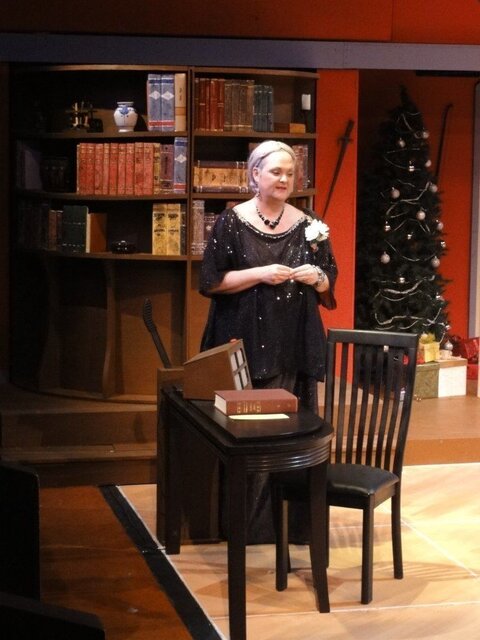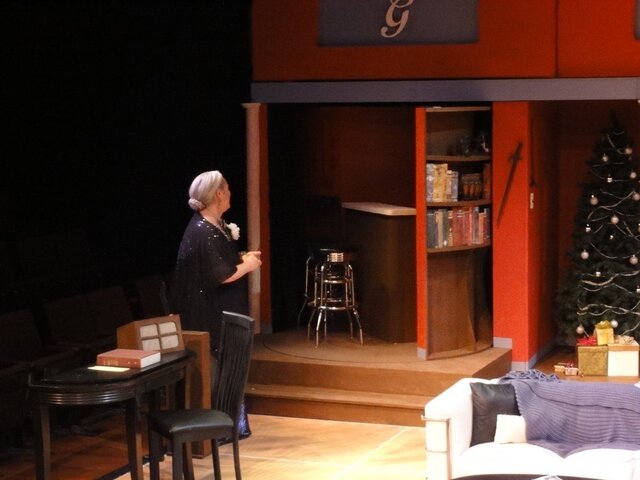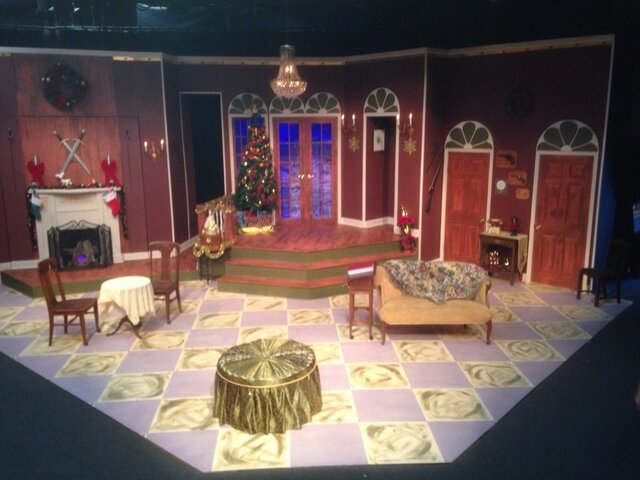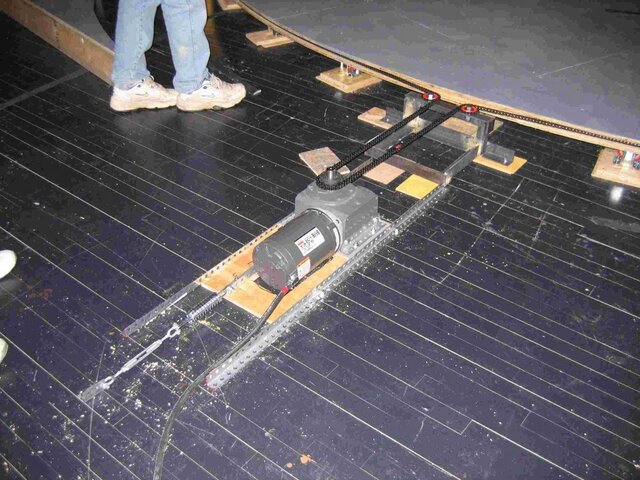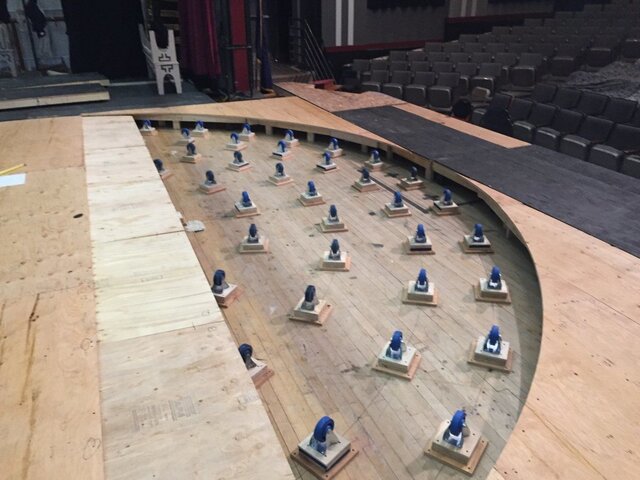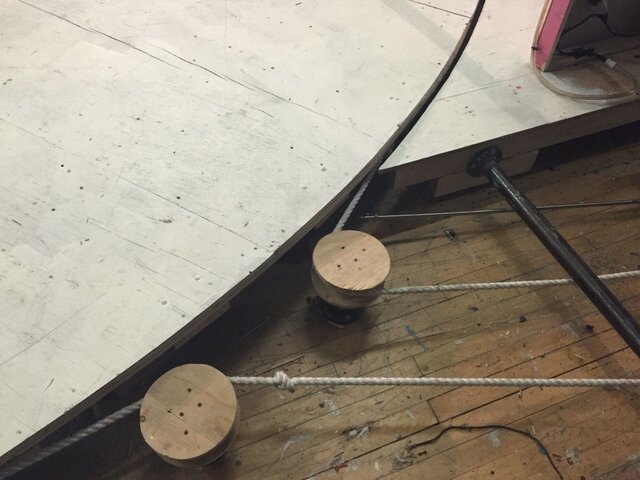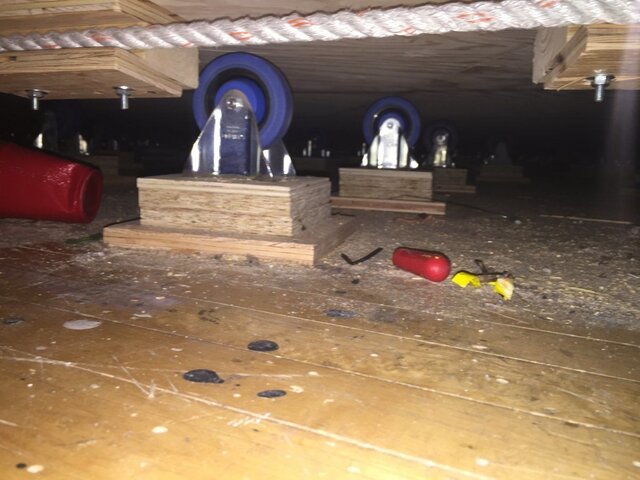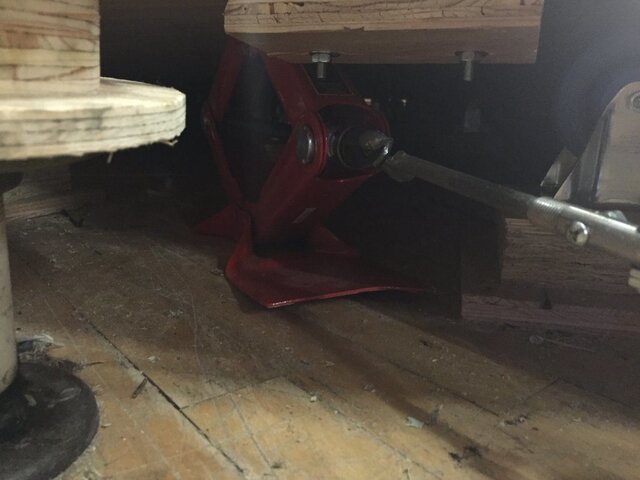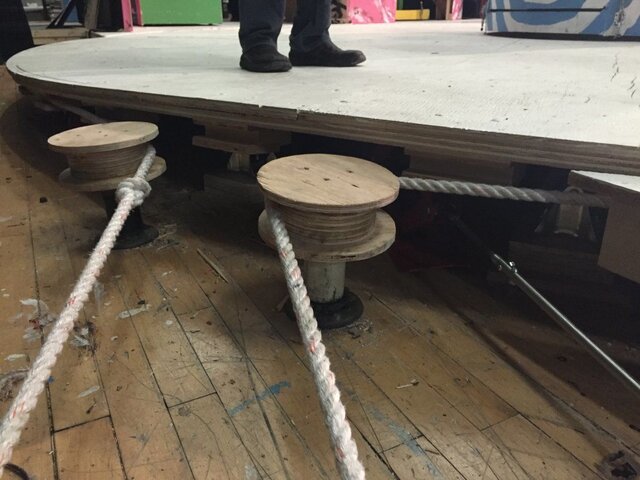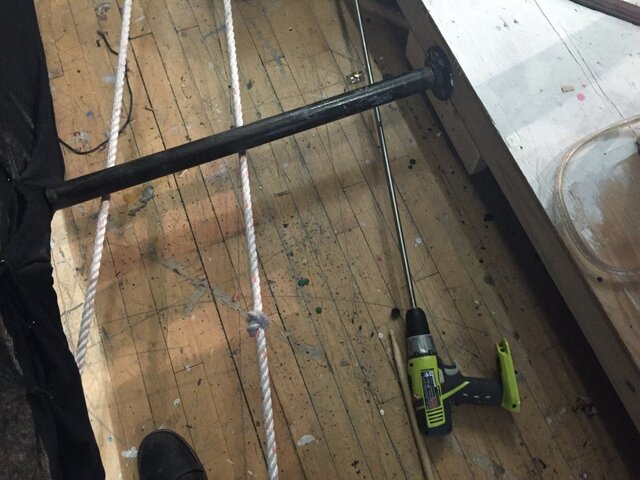Hey all,
First, big thanks to all those out there who help post on these forums for all things tech
theatre. CB has been an invaluable resource to me for years, and now looking for a little guidance...
I'm looking to
build a 24ft
turntable/
revolve and I have experience building a couple different versions of a
turntable, but am intrigued by a design I've recently come across.
http://theaterdad.blogspot.com/2011/06/how-to-make-revolving-stage.html
Before I found the above link, I was essentially planning for this sort of design. Two layers of ply oriented 90 degrees from each other to form the disk over a bed of casters on the floor in concentric circles. I'd love some input on a few things from this "theaterdad" method.
1- The above method is designed around a 16ft
revolve, but, think it would essentially "scale up" to 24ft?
2- Theaterdad used two layers of 1/2in ply, and was all about keeping it light. I too am concerned about weight, for reasons mentioned next. I was planning to go 5/8in since mine will be larger. That said, it seems like eveyone does 3/4, but I'd love the weight savings of 1/2 or 5/8th. Thoughts?
3- What I really liked... was his
manual operation method. The "cog rope cup" as he describes, basically takes a knotted rope and loops it around the
edge of the disk, and catches on several "cogs" or grooved 2x4's (see his description). I really like this idea because- a) it's relatively inexpensive, b) appears rather simple, and c) is operable from off-stage, BUT, would it scale up to a 24ft table? Rope suggestions? Any huge risks?
4- I'm planning for rings of casters at 3', 6', 8'8", and 11'4" from the center. My questions is, if I use the commonly used pivot method described all over CB of two pipes with flanges set within each other with grease, will the center of the disk have enough support? I have used a car
hub and bearing assembly before as well as a slightly different take on the sleeved pivot, but the sleeve doesn't provide any support (vs say a car
hub). No one has had issues with not enough central support? I'm just worried with a central ring of 3ft of center (so 6ft diameter) from center and 5/8in ply.
Basically, I really wanted to go full automation for this show, but after pricing our everything from rentals, to construction
etc, motorized automation is just out of the cards for us this show. That said, again, this rope method looks slick... but will it just be impossible to move a 24ft table, let alone how about when I get a thousand pounds of scenery on it, and 20-30 people(?). The blog mentions how easy it was for "a 16 year old girl" to spin the empty table at ridiculous speeds, and still no issues for a strong person when loaded up... I just worry I do all this... and then cannot move it...
Again, thank you all in
advance for any thoughts, but just trying to get some experiences or input on the above ideas before I'm deep into a design that's potentially problematic from the beginning.



